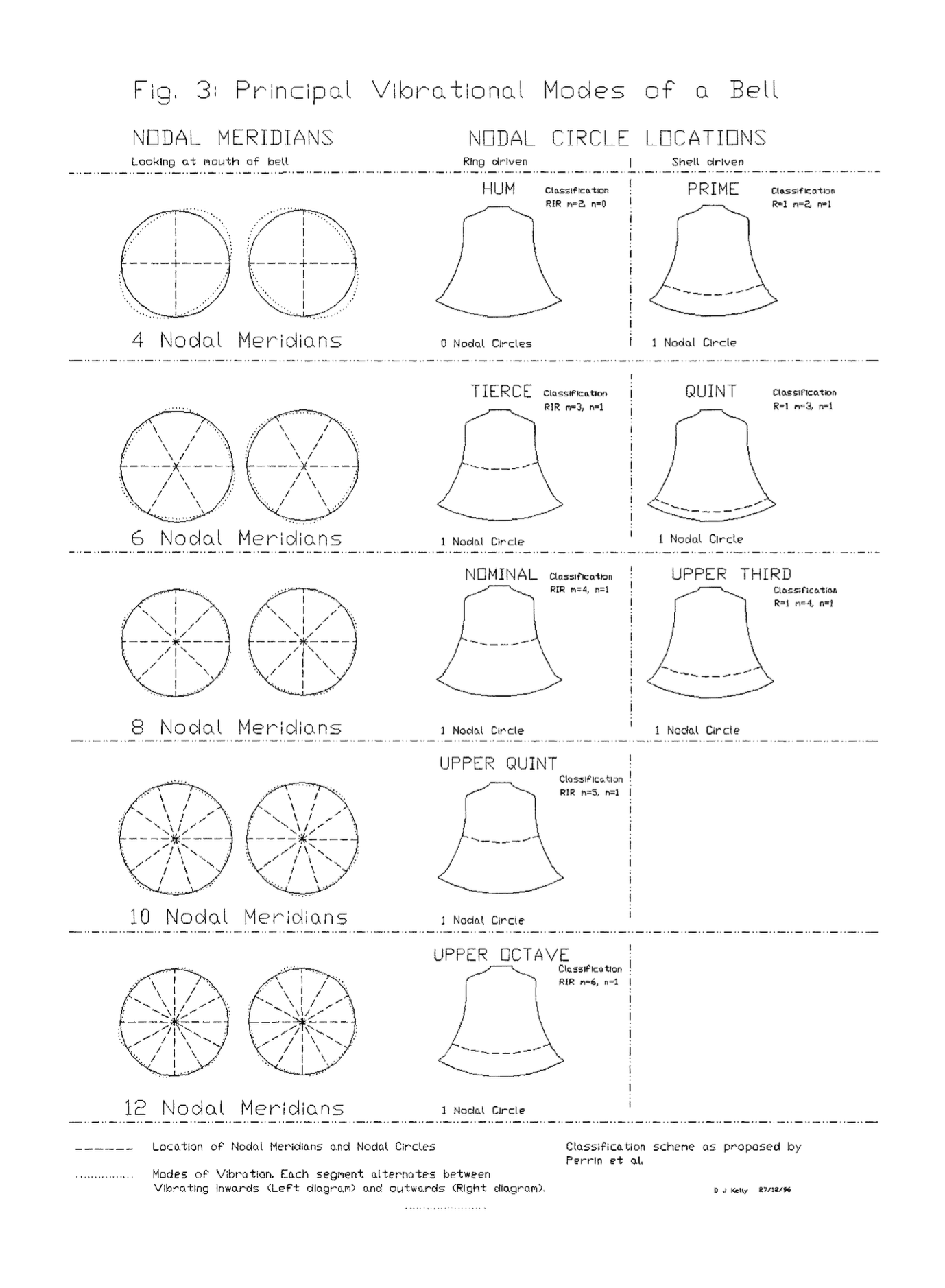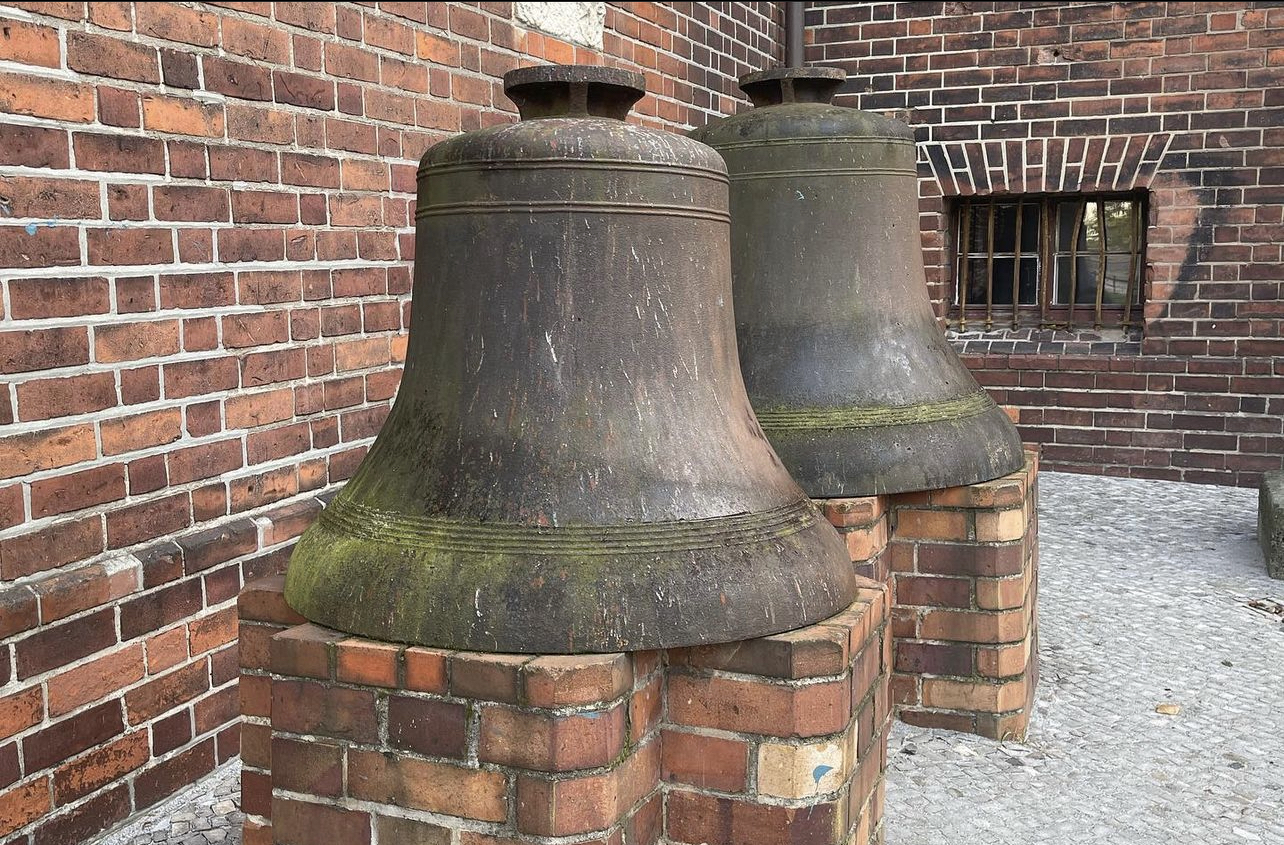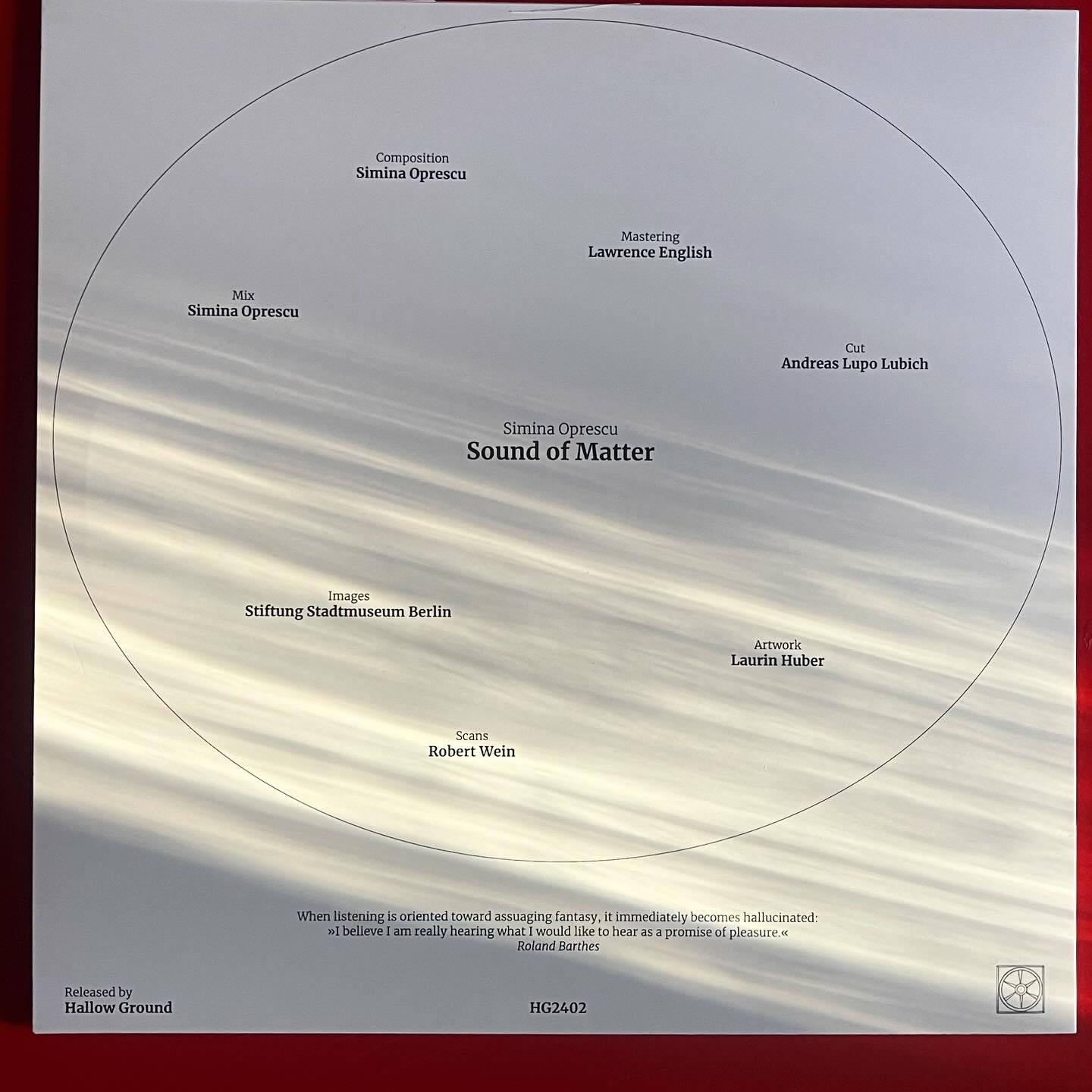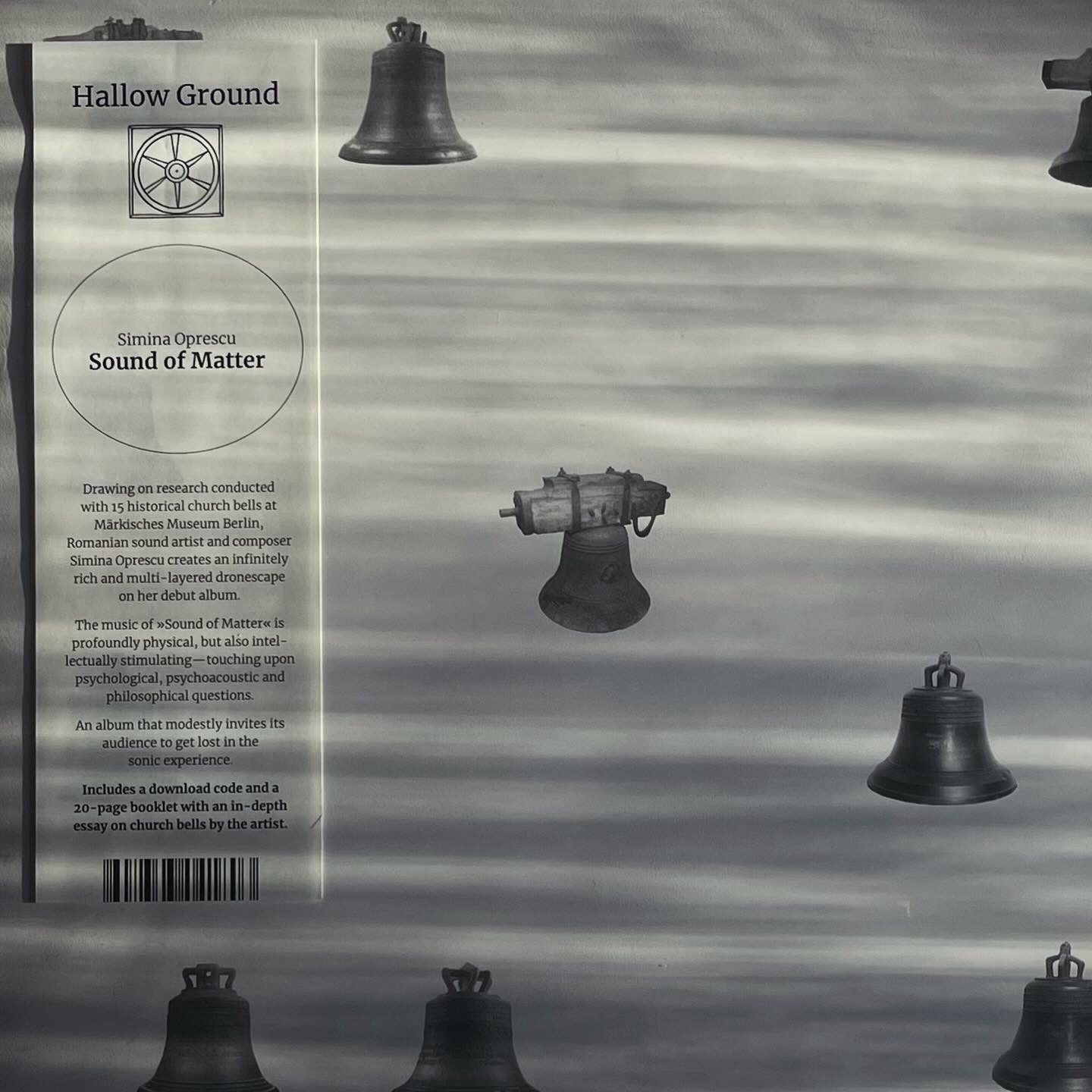Simina Oprescu
electroacoustic composer & sound artist
analysing the inexhaustible matrix,
cosmic elasticity,
through a grain of sound
sonosphist, noetist
researcher, post-disciplinary
Sound of Matter




Reviews
https://www.thenewnoise.it/simina-oprescu-e-ilios-il-suono-e-i-racconti-della-materia/
https://boomkat.com/products/sound-of-matter
https://spectrumculture.com/2024/04/16/simina-oprescu-sound-of-matter-review/
https://www.field-notes.berlin/en/magazine/releases-month-4
Selected Features
https://www.radiofrance.fr/francemusique/podcasts/l-experimentale/actualites-selection-musicale-du-grm-et-de-joseph-ghosn-3328499
https://ars.rtvslo.si/podkast/glasni-novi-svet/173250498/175044820
Available for order on Hallow Ground label Bandcamp
Lmt. vinyl sold out
Released March 2024





In the archives of the Märkisches Museum and Stadtmuseum in Berlin, there exist 15 church bells dating from the 15th century to the early 19th century. Each bell is meticulously documented, including details on its weight, height, diameter, and material composition. While most are cast in bronze, two steel bells are positioned in front of the museum. The density of each material directly influences the bell’s tuning system and, consequently, its tonal characteristics.
Through research, I derived the formula for calculating the fundamental frequency (f) of a bell—referred to in bell acoustics as the Hum. The bell's harmonic series includes the Prime, Tierce, Quint, and the highest partial, the Nominal. Each of these partials is inherently embedded within the bell's shape. Applying the formula f = K1t/d2√E/s(1-m2) where K is the material constant, s is the material density, t is the bell’s thickness at the sound bow, d is the diameter, m is Poisson’s ratio, and E is Young’s modulus, I was able to implement f within a Max/MSP patch. This allowed me to extract the bell’s partials and reconstruct its harmonic spectrum.
Due to the natural beating effect that occurs between different frequencies, I can perceive a dynamic movement in the sound when shifting my head—at times, the Nominal and Prime tones become more dominant. The overlay of multiple Hums results in a multidimensional auditory movement, subtly canceling out spatial echoes and creating a unique sonic presence.
© SiminaOprescu